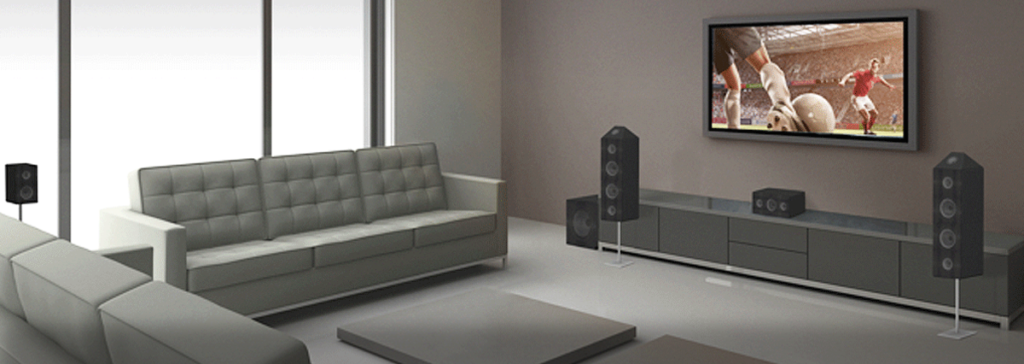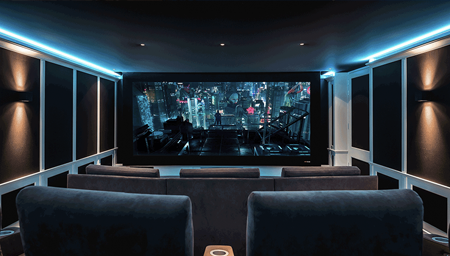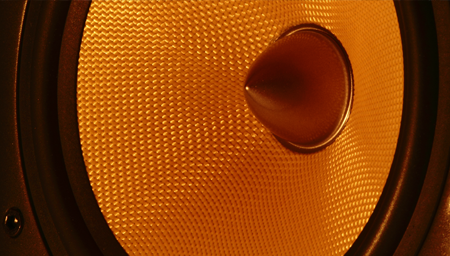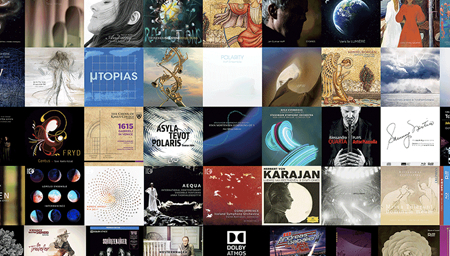
Why You Have to Have Dolby Atmos
Check out our staff’s picks for the best movie scenes and music tracks for finding out what your system can do
also on Cineluxe
Having a great Atmos surround setup is just as important as the video to having a better-than-movie-theater experience at home
by John Sciacca
January 3, 2019
Imagine watching a movie where sound travels around the room with pinpoint accuracy, helping you to track the movement of a character as they move around, hear bullets whizzing past your head, have planes streak through the room, and helicopters hover directly over your head! That is the promise of Dolby Atmos, which delivers the most realistic and immersive surround sound experience ever.
Dolby Atmos is the most exciting development to hit the home market in years and has an even greater impact on the movie/TV watching experience than 4K HDR video. In fact, when forced to choose between watching a movie in 4K HDR without Atmos or 1080p Blu-ray with Atmos, I go the Atmos route every time. I’ve given dozens of demonstrations both in my showroom and in my home, and after experiencing a properly set up and configured Atmos system, no one has preferred the older, 5.1-channel sound. Atmos is a must have for a luxury installation.
Dolby Labs launched Atmos commercially in 2012 with Pixar’s Brave. Since then, hundreds of films have been mixed with Atmos. It is now supported by every major movie studio, and the number of movies, concerts, and even video games with Atmos soundtracks is growing all the time. Atmos content is available on Blu-ray and Ultra HD Blu-ray discs, titles downloaded from the Kaleidescape Movie Store, and from streaming services like Vudu, Netflix, Amazon, and iTunes.
How do I get it?
Experiencing Dolby Atmos in your entertainment space requires three basic things: An Atmos-compatible media player, an Atmos-compatible receiver or processor, and a speaker system that can handle however many channels you and your integrator decide to go with.
Compatible players include any Blu-ray or Ultra Blu-ray player, including Xbox One. Many streaming players support Atmos, including the new Apple 4K TV, Roku, and Amazon Fire TV Stick. Receivers and processors are available from companies like Marantz, Yamaha, Anthem, Denon, Sony, Onkyo, Pioneer, and Integra.
What kinds of speakers do I need?
Dolby Atmos systems can support far more speakers than the 5.1 of Dolby Digital—up to 64 in commercial movie theaters. One of the most significant changes with Atmos is the creation of two distinct speaker layers, with a bed of speakers at ear level and a second height layer that places sounds distinctly overhead.
The most common entry point for enjoying Atmos at home is a 5.1.2 speaker configuration. (In plain English, this means there are five speakers at ear or floor level, one subwoofer, and two speakers above ear level, for the height channels.) Most luxury installations use a 7.1.4 configuration. This provides a very immersive experience, with full 360-degree audio pans around the listener as well as good hemispherical coverage overhead.
For an even more engaging experience, companies like Marantz, Denon, Acurus, Storm Audio, and Datasat have receivers and processors that support more than 7.1.4 channels. And for a truly premium home experience, companies like Trinnov and JBL offer processors that can support the current maximum up to 24.1.10.
(While there are Dolby Atmos soundbars that do a fair job of creating an immersive audio experience, these would never be appropriate for a luxury installation, so I won’t be covering them here.)
Do I need to have speakers in my ceiling?
Yes. And no. (But mostly yes!)
Having sounds all around the listener, including overhead, is key to creating a realistic, fully immersive sound environment, and locating speakers in the ceiling is the best way to help accomplish this. Fortunately, nearly any traditional, quality in-ceiling speaker is compatible with Atmos, so choosing a model from the same manufacturer as your front speakers typically offers the best sonic match. (Dolby recommends using speakers with a wide dispersion pattern—that is, ones that send out sound more like a shotgun blast than a rifle bullet.)
But if you can’t place speakers over you—due to a coffered ceiling or an open-beam design or difficulties running wire to the speaker locations—companies like Definitive Technology, Sony, Onkyo, Pioneer, Klipsch, and KEF offer floor-standing Atmos speakers with modules that can create an overhead speaker effect.
These angled modules sit atop the front and rear left and right main speakers firing sound upward, where it’s reflected off the ceiling and bounced back down to the listener. While these can be great problem solvers, the audio effect of these upfiring modules is impacted by room design—ceiling composition, angle, and height, and seating distance—making it harder to predict performance compared to a true overhead speaker installation.
Dolby Atmos is a now a proven technology, widely adopted in both movie theaters and at home, and is almost always included as part of a modern luxury installation. If you’ve been looking to elevate your home audio experience to the next level, Dolby Atmos is a terrific place to start!
Probably the most experienced writer on custom installation in the industry, John Sciacca is co-owner of Custom Theater & Audio in Murrells Inlet, South Carolina, & is known for his writing for such publications as Residential Systems and Sound & Vision. Follow him on Twitter at @SciaccaTweets and at johnsciacca.com.
WHAT MAKES ATMOS DIFFERENT?
Atmos is the latest in a long line of Dolby surround technologies dating back to the ‘70s. But, unlike previous versions, which were all channel-based (that is, the specific number of speakers the audio was mixed for in the engineering studio), Atmos uses an entirely new process Dolby called “sound objects.”
Previously, audio was mixed with a fixed number of speakers, up to 7.1 channels (front left, center, and right, surround right, surround back right, surround back left, surround left, plus a .1-channel reserved for low-frequency effects such as explosions). With Atmos, audio designers are no longer limited to a fixed speaker layout but have up to 128 sound objects that can be moved anywhere around the room, allowing sounds to be more precisely located.
These objects also have size and weight. Thus, a massive starship hovering overhead has a different feel—and plays out of more speakers—than, say, a tennis ball bouncing. All 128 of the audio objects from the original theatrical mix are retained and represented in the home release.
To precisely locate objects around the room, Dolby Atmos installations support far more discreet speaker channels, including multiple height speakers that are placed above listeners to create sounds that truly come from overhead. In fact, theatrical installations can have up to 64 speakers. Obviously, that is more speakers than home installations can support—in fact, Dolby Atmos for home cinema only supports up to 34 speakers—so Atmos uses something called a channel renderer to create a custom mix on the fly to remap audio objects to whichever speaker configuration is being used, meaning that nothing is lost between the theatrical and home audio mix. —J.S.
© 2025 Cineluxe LLC






